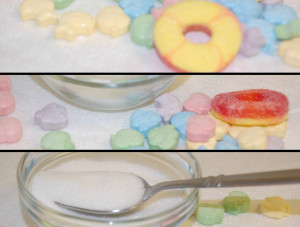By Celeste Hilling, Skin Coach; and CEO, Co-Founder & Product Formulator, Skin Authority
The dangers of eating too much sugar go way beyond the negative effects on your waistline and skin. When speaking at Hilton Head Health a few weeks ago, I received the attention of everyone in the room when I said the World Health Organization is taking on sugar. A new WHO guideline recommends that adults and children reduce their daily intake of free sugars to less than 10% of their total energy intake.
WHO evidence shows:
- Adults who consume less sugar have lower body weight.
- Increasing the amount of sugars in the diet is associated with a weight increase.
- Children with the highest intakes of sugar-sweetened drinks are more likely to be overweight or obese than children with a low intake of sugar-sweetened drinks.
Free sugars refer to monosaccharides (such as glucose, fructose) and disaccharides (such as sucrose or table sugar). These may be added to foods and drinks by the manufacturer, cook or consumer. They are also naturally present in honey, syrups, fruit juices and concentrates.
A few years ago, I gave up processed sugars. As a skin coach, I knew that sugar can make skin dull and wrinkled. To blame is a natural process known as glycation. With glycation, the sugar in your bloodstream attaches to proteins to form harmful new molecules called advanced glycation end products (AGEs). As AGEs accumulate, they damage adjacent proteins permanently and do not detach. Most vulnerable are collagen and elastin, which keep skin firm and elastic.
Typically, external signs of excess-sugar-induced aging will start showing around ages 30-35. Unfortunately, there is no way to completely stop glycation; the key is to stop accelerating the process.
Here’s advice to do so:
- Watch “hidden” sugars. Much of the sugars consumed today are hidden in processed foods that are not usually seen as sweets. For example, 1 tbsp of ketchup contains around 1 tsp of free sugars. A single can of sugar-sweetened soda contains up to 10 tsp of free sugars.
- All carbohydrates are broken down into sugars by the body, so carbs and sweets are going to be your worst enemy when it comes to limiting glycation. For example: when the body breaks down a simple carb, one gram of carbohydrate is turned into four grams of sugar.
- Complex carbohydrates (ex. brown rice, fruits, vegetables) take longer for your body to break down, so sugars are released more slowly into your bloodstream, thus limiting the damage.
- Avoid starches fried in high heat or that are commercially processed. The heat ups the glycemic index.
- Follow an anti-inflammatory diet with healthy fats, lean protein, fiber, and antioxidants to limit glycation. Eat proteins first as they will balance the insulin spikes of the complex carbs.
